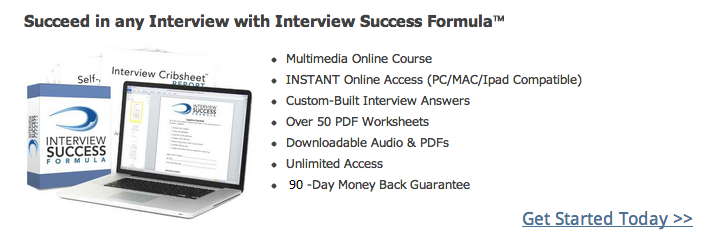 If you are interviewing for a leadership position, I am going to share a framework today that can make you stand out from the competition.
If you are interviewing for a leadership position, I am going to share a framework today that can make you stand out from the competition.
This framework will help you prove your value by making it simple to understand and explore the organization’s challenges. It applies to you, whether you are applying to be a police chief, a corporate manager, a marketing director, or a school administrator, among others.
Now, a key piece of a leadership position is developing your strategy. Generally speaking, there are only three strategies to consider: to grow operations, shrink operations, and make the current operations more efficient.
You can use up to all three of these strategies at the same time (e.g. grow one area and shrink another, while improving results per unit of input). So it’s simply a matter of deciding which ones work best for the current situation.
Don’t wait until you have the job to start thinking about what strategies to apply.
With a leadership position, you need to prove you “get it” at the job interview. This means asking questions about what the strategic objectives will be and/or having ready the basic outline of a plan.
Figuring out which strategy to use depends on which inputs to improve.
We’re going to get a little technical here, yet if you push through, I truly believe it will be worth it.
Here’s a framework that can help you figure which inputs to change. It’s an economics formula:
Quality x Quantity – Fixed Costs – Variable Costs = Total Impact
Let’s break it down and then put this back together:
In the US public education debate, the discussion on how to improve student outcomes often turns to whether we need more teachers or better teachers. That’s what the Quantity and Quality part of the formula refer to: do we need more customers, or more financial value per customer, do we need more police officers or more training per officer, do we need more advertising or to refine our current advertising for a better response to each advertisement.
Quantity, how can we increase the number of units to create a broader impact?
Quality, how can we improve the results per unit?
As a quick aside, sometimes these two issues are inversely related. More quantity means lower quality – so cutting back quantity can at times lead to better results.
So that’s the first part of how this formula turns into on the ground strategy. If you are working in a leadership position in the government sector today and some other industries, you may be more familiar with the second part, managing costs. While cost can be measured in time, money and others ways, it can be broken into two main types.
Variable costs are the costs that change with quantity. If an advertisement costs me $1, then 20 ads will cost $20 and 100 ads will cost $100. I can try to reduce my variable costs by:
showing the ads fewer times,
by finding less expensive substitutes, like ads that cost $0.50 instead of a $1 or
by finding more impactful substitutes, like an ad that still costs $1, but will be seen by 20 people instead of 10 people.
Or, in other spaces, I can switch from brand name pharmaceutical drugs to generic drugs, or reduce the budget per teacher for continuing education, etc.
How can cost management impact the strategy you develop for this leadership position? In any sector you might lead, you have a number of options: decrease total units, decrease cost per unit, increase efficiency per unit.
Fixed costs are the baseline costs of running an organization – which means they are the hardest thing to change. An example of a reduction in fixed cost would be moving to a smaller building to save on rent.
(As an aside, employees are sometimes a variable cost and sometimes a fixed cost. It often depends on time horizon and the type of organization.)
Okay, so back to the formula:
Quality x Quantity – Fixed Costs – Variable Costs = Total Impact
In a job interview for a leadership position, addressing these costs could make your potential direct reports nervous about losing their job. So handle with care.
As you prepare for the interview, ask yourself, how you can improve each of these pieces to create a greater total impact for the organization. Generate ideas and suggestions and write down any questions that arise as well – such questions can show that you area an insightful person with a lot to contribute.
Think about what to grow, what to shrink, and how to improve efficiency (amount produced divided cost to produce it). Having prepared, you will look like a strategic leader in your next interview.


